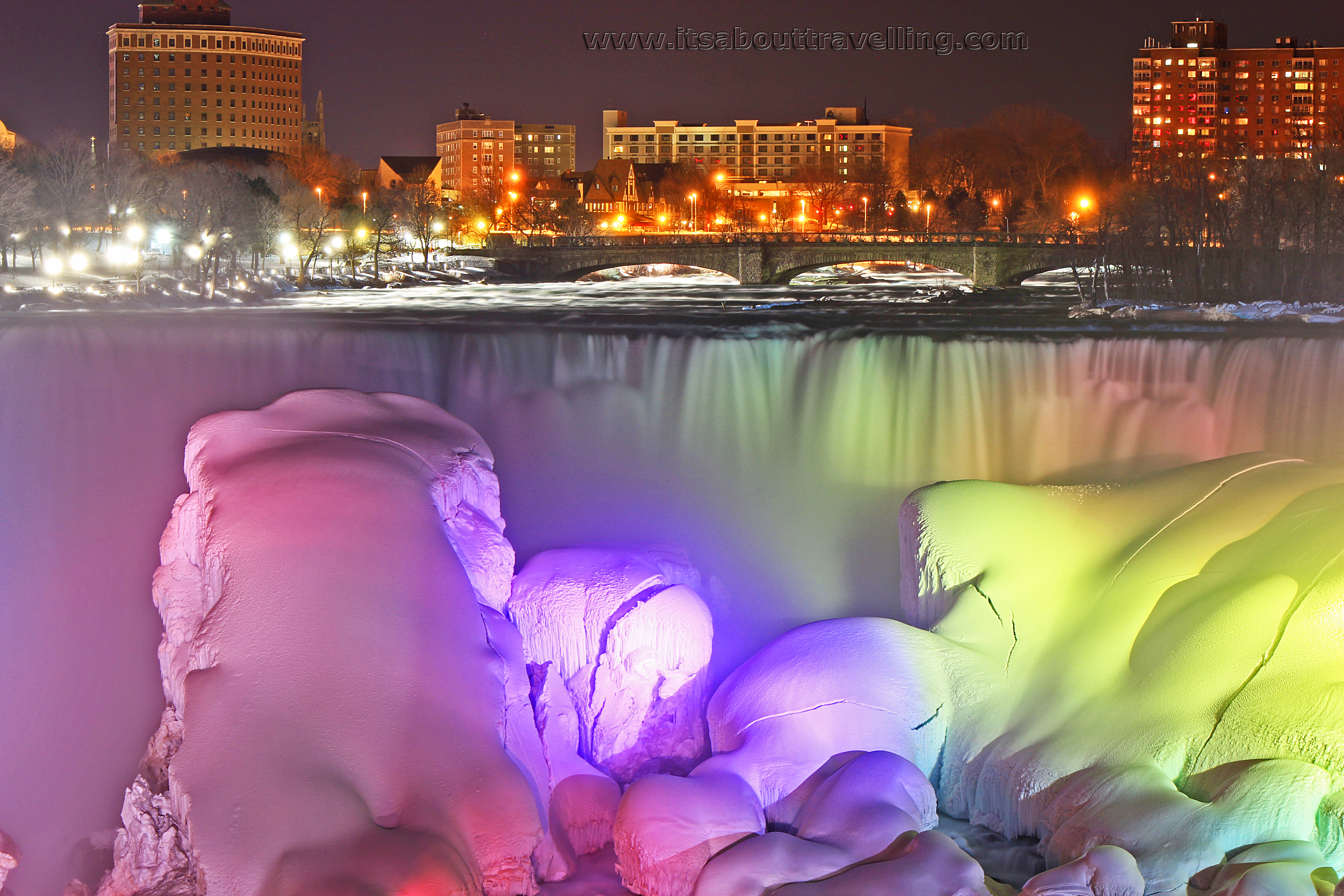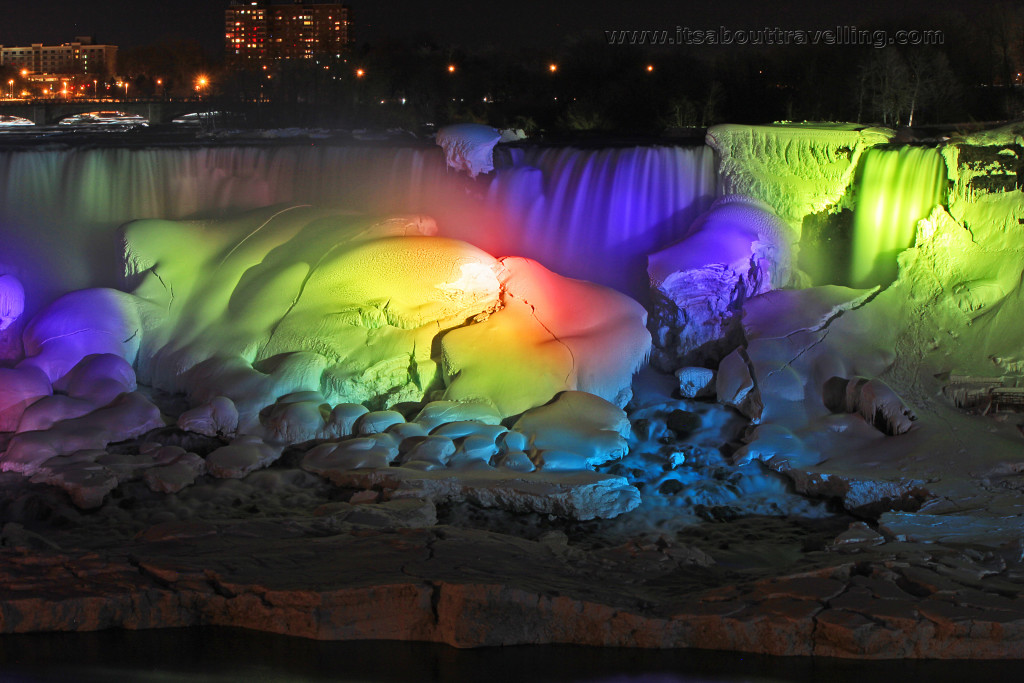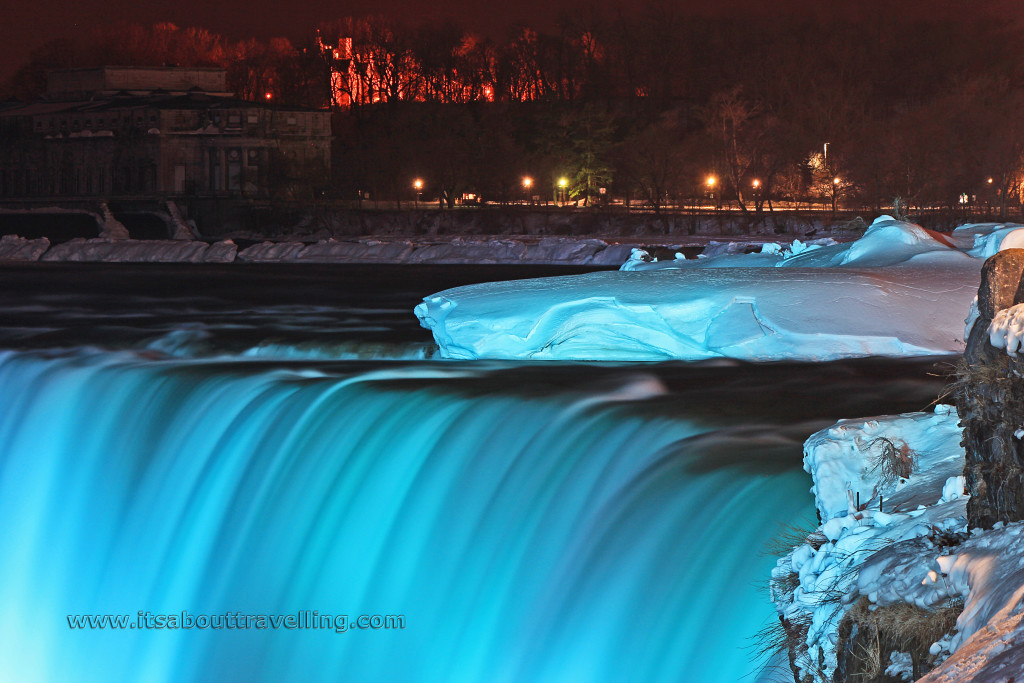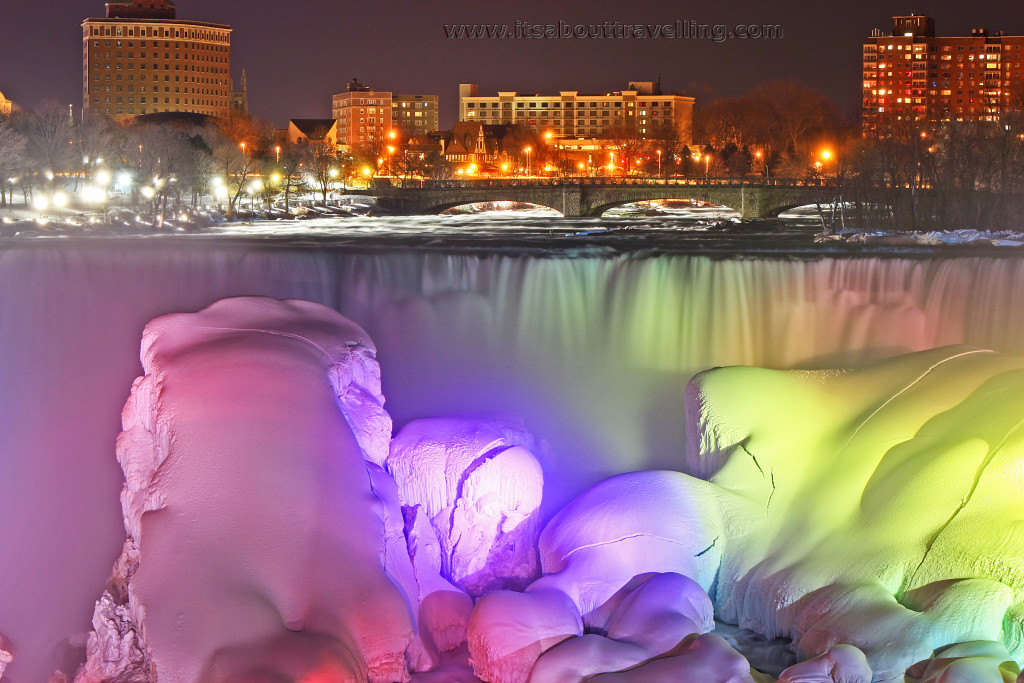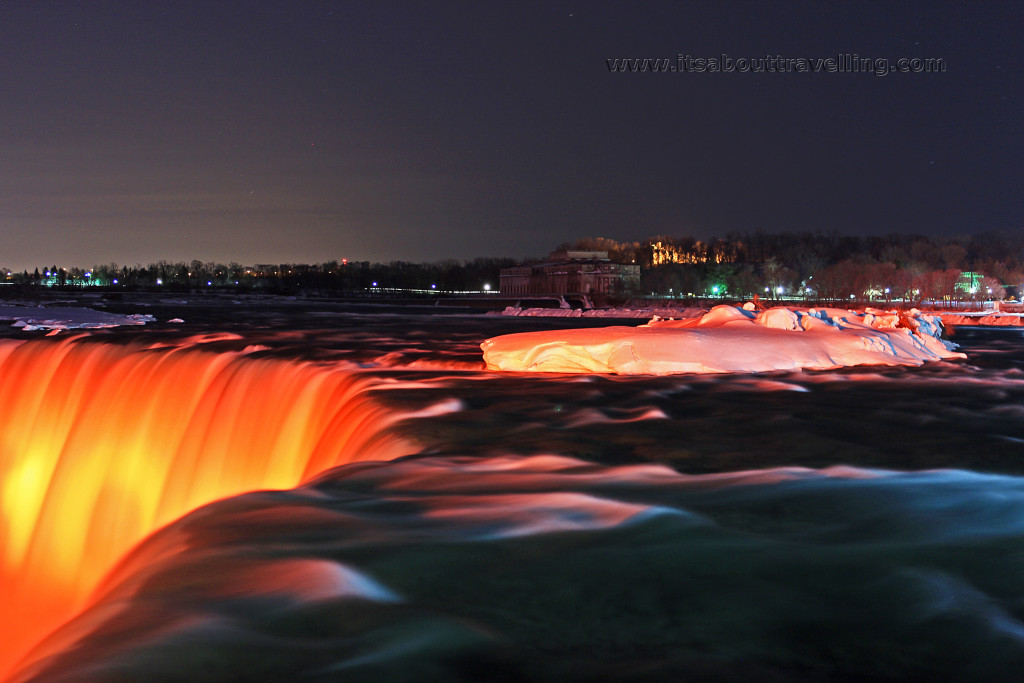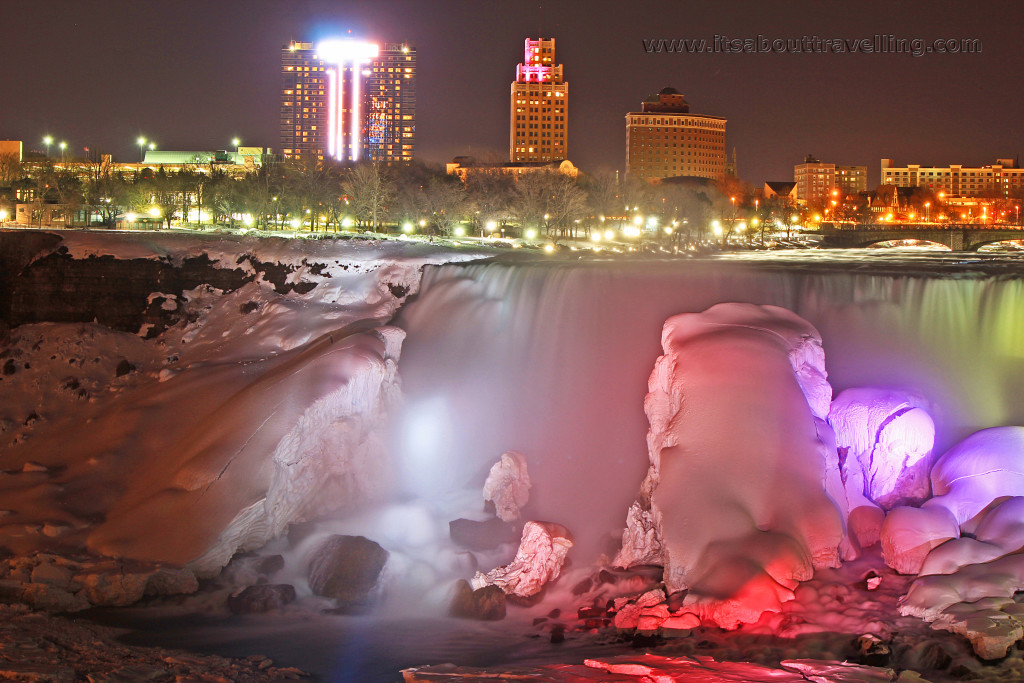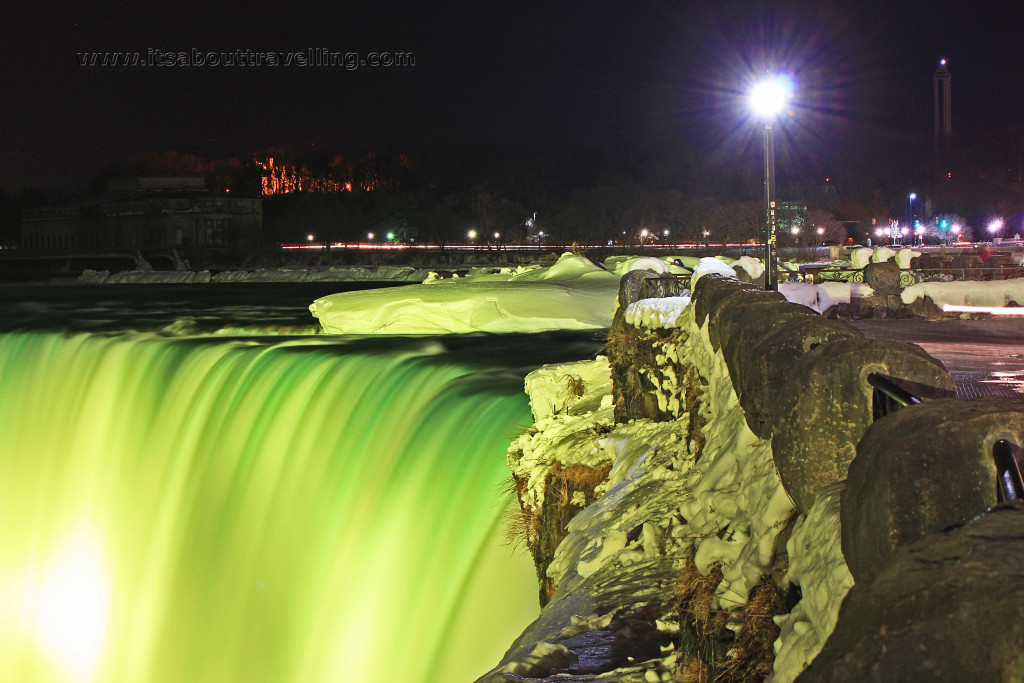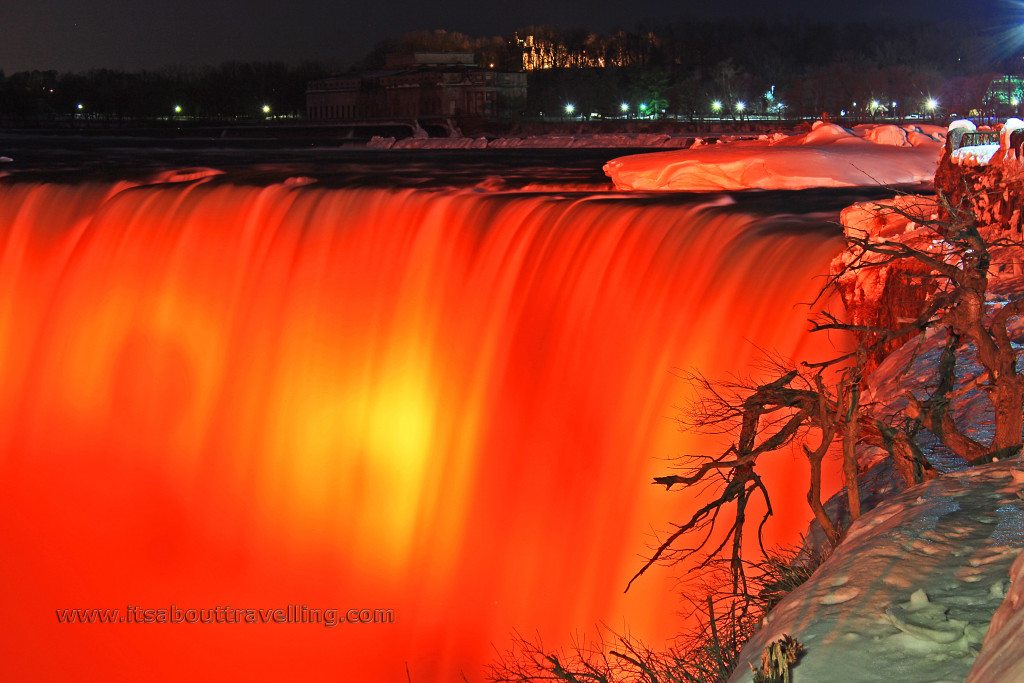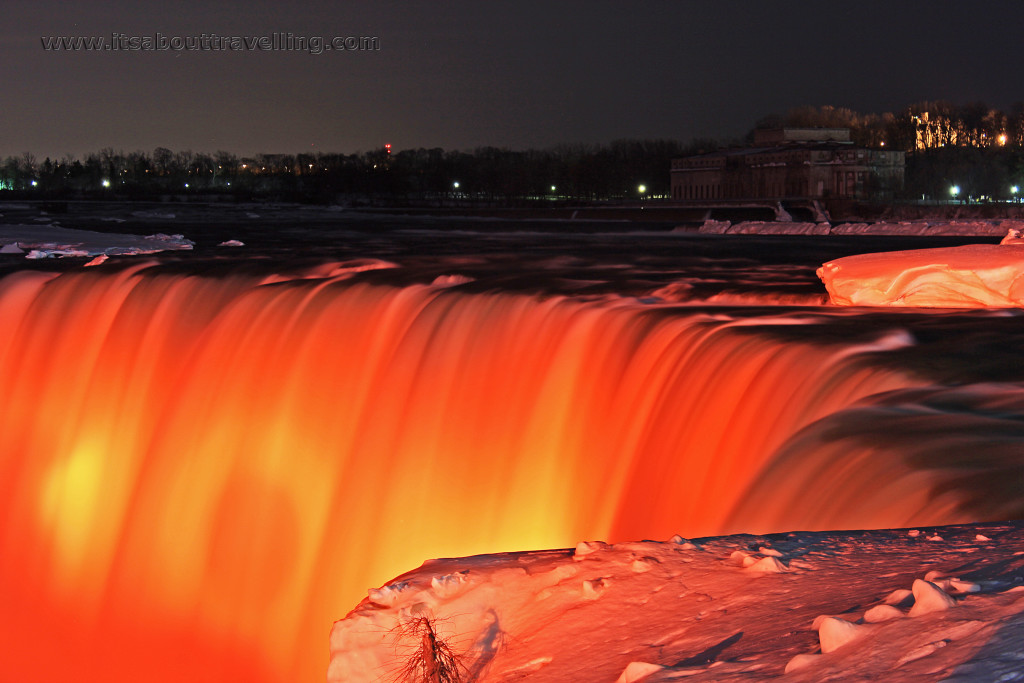This is a sort of ‘part 2’ to an article we put up a few weeks ago. That article featured Niagara Falls during the day at high speed exposure. Today, it’s later that evening when both the Horseshoe Falls and American Falls were illuminated with colour. The images switch from 1/4000th of a second to 30 second exposures.
Thinking of taking a Niagara Falls tour from your hotel in Toronto? Check out these guys: ToNiagara
Niagara Falls Lit Up
These images were taken right at the end of the 2015 deep freeze. The massive glacier sized ice domes were starting to break off and disintegrate. If you were at the falls at the right time, you could witness house sized pieces fracturing off and crashing into the open water below.
If you look at the image directly above of the American Falls and Bridle Veil Falls, the edge of the ice where it meets the Niagara River doesn’t look like much. However, the temporary cliffs created are probably in the range of 10-30 feet.
The ice buildup looks like nice fluffy snow. However, especially in March, it is rock hard ice.
I thought that the ice would actually take away from the illumination of the falls and didn’t expect to get many images. However, in the end it only enhanced the experience. The American Falls still benefits the most from the nightly illumination. The Horseshoe Falls creates too much of a mist cloud which blocks the lighting from reaching the actual waterfalls in most places. The American Falls mostly has a clean, non-cloud obstructed view.
The image above is probably one of the most underrated views of Horseshoe Falls, especially at night. Most will take all their pictures from below the crest, looking at the falling water straight on. Above the crest gives a feeling of helplessness as the water has no choice but to rush over the edge.
From this point during the day, you could actually convince yourself that the water is just a foot deep and you might be able to walk across the smooth rock, around the edge of the falls. In reality, it’s several feet deep and moving at amazing speeds. The clarity of the water skews your perception of the depth.
Can the Seneca Casino on the U.S. side be considered anything but light pollution?! The rest of the old downtown of Niagara Falls, New York is rather quaint and has a historic feel to it.
Looking at the ice mounds, note that the waterfall is closer to 170 feet from top to bottom. The ice buildup is on top of rock at the bottom but the height is quite incredible.
The problem with long exposure on the Horseshoe Falls at night is that circles burn in where the light is actually aimed at the waterfall.
Interestingly, as I was leaving this spot, close to 11pm, the local police drove right up the walkway, got out and checked over the edge. Not sure if this is regular routine or they were actually looking for something. If anyone tried to walk on the ice past the railings, they would leave no footprints and would surely, quickly slide to their doom.
The night ends with a blood red view before turning bright white and the lights turning off one by one. At 11:05, I was taking one last shot of Bridle Veil Falls, next to Goat Island on the American side. The lights were turning off, leaving a black void where Niagara Falls previously was. Interestingly, the last light to go out was the one on Bridle Veil Falls – about four seconds before my 30 seconds were up.
I hope you enjoyed and I promise that’s the end of the Niagara Falls images (for a while). The thing is, when you’re at the Falls, you often see people pulling over at the side of the road near Table Rock (where it is illegal to stop), where they run out, take their one token shot of the waterfall then jump back in their car and take off. All this to avoid the $10 or so for parking.
The waterfalls, like anything in nature, are a living creation of Mother Nature and are never the same from one second to the next. If you’re getting out of your car for five minutes to see this natural wonder, you’re missing out. I’ve been going here for the past 40 years and it always seems like a new discovery. And, it’s not just the sights, it’s also the sounds. Just stand and listen. The volume of the roar is not a constant.
